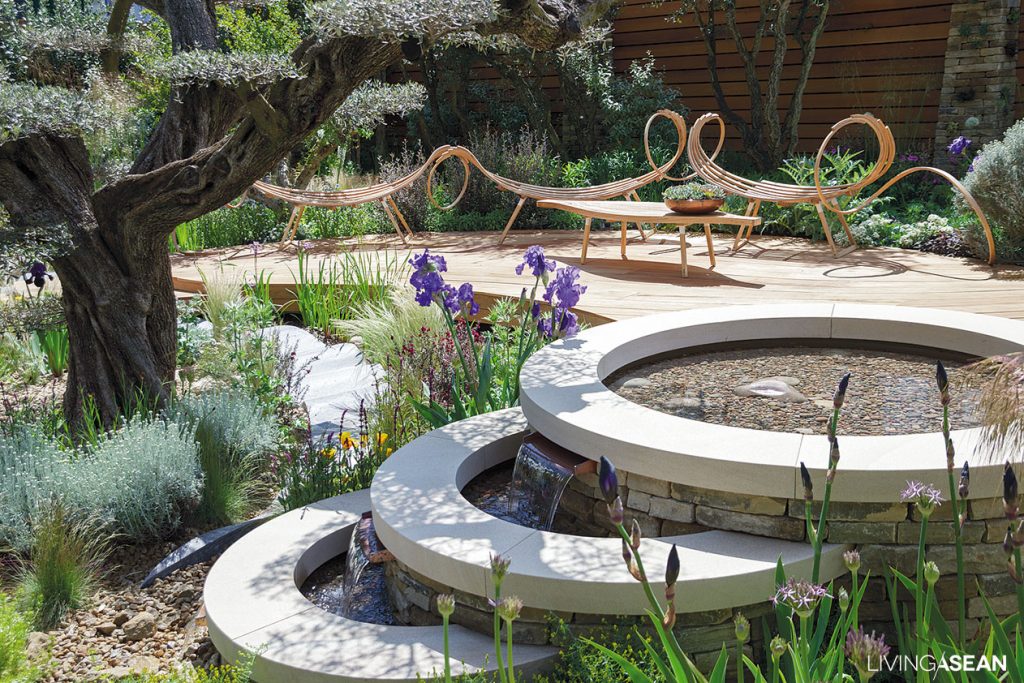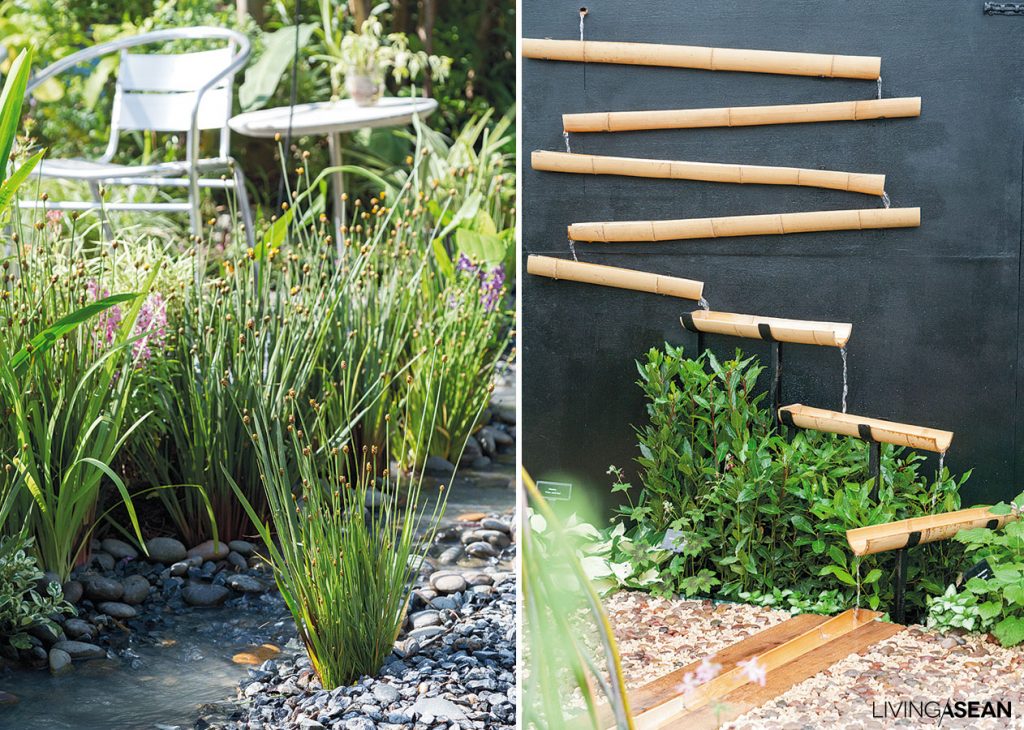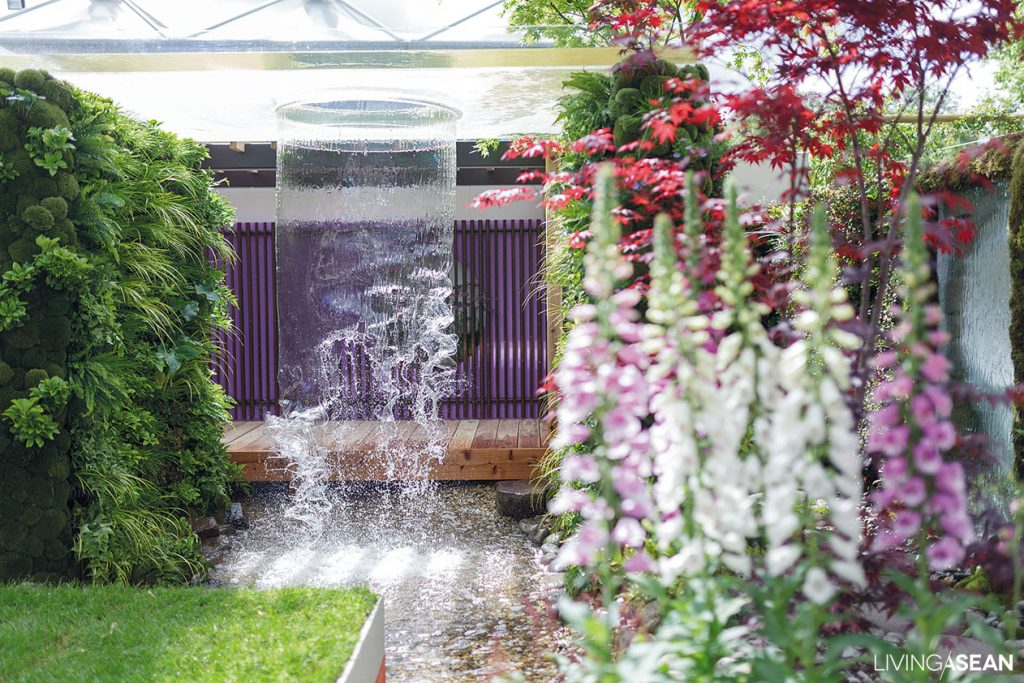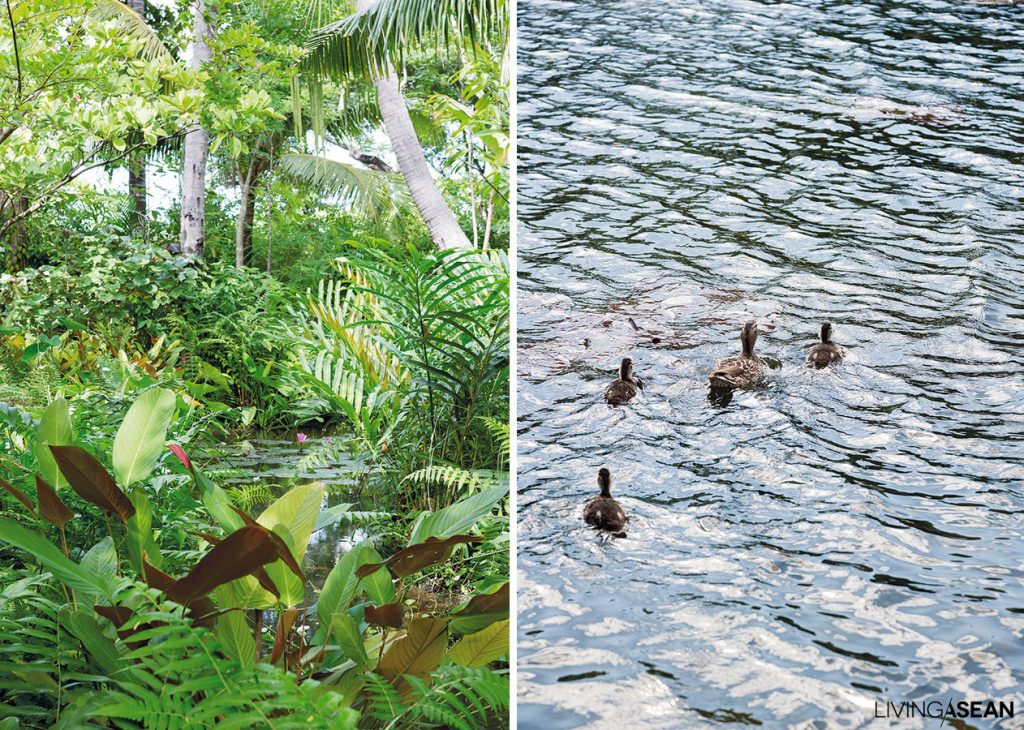Besides nurturing plants, water has many garden uses: fresh, exciting ornamentation, for one.
/// Thailand ///
Story: Panchat Changchan /// Photography: Baanlaesuan



– The sound of water –
If a garden includes naturally flowing water or an old pond or spring, the water can be used to drive a fountain or water wheel, or dammed up to control the flow near a garden entrance or a relaxation spot.
Or, original garden fixtures such as walls or other architectural elements can be used with pumping systems to create dimensional motion in the form of a waterfall wall, or an artificial waterfall. Here, choose rough-surfaced materials and/or steep surfaces so water running across them produces a strong, clear sound. This can be enhanced by controlling water pump pressure.


– Images reflecting beauty –
The inherent reflective property of water can bring a more spacious garden atmosphere, adding dimension and color as well as changing motion and texture. We see this in world wonders such as the Taj Mahal and Wat Kinkakuji Temple, as well as in “infinity” swimming pools at seaside resorts. Reflection always creates feeling and perspective in the viewer, often simply a function of the width and the stillness of the water. A lake or large pond dug next to a garden highlight can create a beautiful view for people looking from the opposite bank.

– Lights in the water –
Lights in and around the water create worlds of brightness and shadow above and below the surface. Refraction creates beautiful, entrancing “water ghosts.” Underwater lights should be used in conjunction with well-structured ponds and good treatment systems to ensure easy maintenance, protect against damage, and to get bright, clear underwater lighting. Only specially designed light bulbs adapted for low voltage should be used underwater.


– Mist to create dimension –
Mist or water spray is commonly used in tropical or jungle gardens, mainly with minispray-type sprinklers primarily intended for watering and moisturizing plants, especially large ones such as ferns or orchids, but incidentally also cooling the garden. Nowadays minisprinkler heads are often hidden among plants or in spots among small shrubs and ground cover plants, but they can be also be used with fountain systems to create mist in the middle of ponds, adding a different kind atmosphere or narrative than usual to sculptures or pond highlights. A good example is in the yard in front of the Place de la Bourse in Bordeaux, France.


– Related sculptures –
Water can itself be used as a sculpture, or in combination with actual garden sculptures, statues, fountains, European-style bird baths, or for fish ponds, as in Thai gardens. Statues using water as ornamentation usually highlight its motion, spouting up or falling. This is common in ordinary fountains, but other water properties can be used in combination, for instance transparency. Water curtains or moving shapes that look like glass can be created. And water plants themselves often have beautiful and unique shapes.

– Creating a good ecosystem –
The most important use of water in the garden is to create life and maintain an ecosystem that faithfully imitates nature so the garden can grow sustainably, not only for plants, but as a home and food source for water creatures and many other living things. If you have a large area for a garden, you could begin by digging a pond about one-fourth its size to hold rainwater, then use that pond for watering plants as well as to grow local water plants and riparian vegetation. Make an artificial waterfall, grow interesting plant species large and small, and even enjoy the delights of raising fish!

